-
 Bitcoin
Bitcoin $106,731.2224
-1.05% -
 Ethereum
Ethereum $2,444.9804
-1.20% -
 Tether USDt
Tether USDt $1.0003
0.01% -
 XRP
XRP $2.1882
0.09% -
 BNB
BNB $651.1435
-0.61% -
 Solana
Solana $148.3252
-2.09% -
 USDC
USDC $1.0000
0.01% -
 TRON
TRON $0.2787
0.55% -
 Dogecoin
Dogecoin $0.1598
-3.16% -
 Cardano
Cardano $0.5520
-2.43% -
 Hyperliquid
Hyperliquid $39.0960
-2.64% -
 Bitcoin Cash
Bitcoin Cash $516.9519
2.98% -
 Sui
Sui $2.7011
-2.95% -
 Chainlink
Chainlink $13.0582
-1.71% -
 UNUS SED LEO
UNUS SED LEO $8.9250
-2.53% -
 Stellar
Stellar $0.2359
-0.18% -
 Avalanche
Avalanche $17.3856
-3.73% -
 Toncoin
Toncoin $2.8095
-3.56% -
 Shiba Inu
Shiba Inu $0.0...01121
-1.95% -
 Litecoin
Litecoin $85.2795
-0.85% -
 Hedera
Hedera $0.1471
-2.15% -
 Monero
Monero $319.8004
1.12% -
 Dai
Dai $1.0001
0.01% -
 Ethena USDe
Ethena USDe $1.0001
0.02% -
 Bitget Token
Bitget Token $4.5344
-1.07% -
 Polkadot
Polkadot $3.3224
-2.96% -
 Uniswap
Uniswap $6.9697
-2.75% -
 Aave
Aave $266.1658
-2.25% -
 Pepe
Pepe $0.0...09414
-3.41% -
 Pi
Pi $0.4913
-3.29%
How to import and export accounts with the MetaMask wallet?
MetaMask offers a user-friendly way to manage crypto accounts, allowing users to import and export them securely using private keys or seed phrases.
Apr 06, 2025 at 02:50 pm
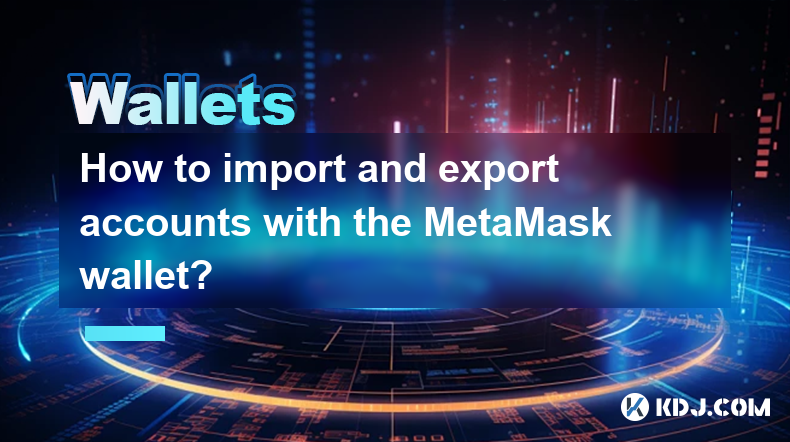
Managing your cryptocurrency accounts efficiently is crucial for any crypto user, and the MetaMask wallet provides a user-friendly way to import and export accounts. Whether you're looking to back up your existing accounts or transfer them to a different device, understanding how to use MetaMask for these purposes is essential. In this article, we will explore the detailed steps to import and export accounts with the MetaMask wallet, ensuring you can manage your digital assets securely and conveniently.
What is MetaMask and Why Use It?
MetaMask is a popular cryptocurrency wallet that allows users to interact with the Ethereum blockchain and other compatible networks. It serves as a bridge between your regular web browser and the decentralized applications (dApps) built on the blockchain. One of the key features of MetaMask is its ability to manage multiple Ethereum accounts within a single interface. This makes it an ideal choice for users who need to handle various accounts for different purposes, such as personal use, trading, or managing decentralized finance (DeFi) activities.
Preparing to Import and Export Accounts
Before diving into the process of importing and exporting accounts, it's important to ensure you have the necessary preparations in place. Here are some steps to consider:
- Ensure you have the latest version of MetaMask installed. You can download it from the official MetaMask website or through browser extensions in Chrome, Firefox, or Brave.
- Backup your existing accounts. Before making any changes, it's crucial to have a backup of your private keys or seed phrases to prevent loss of funds.
- Understand the difference between private keys and seed phrases. Private keys are used to access individual accounts, while seed phrases can restore all accounts linked to a wallet.
- Have a secure environment. Make sure you are in a private setting when performing these operations to protect your sensitive information.
Exporting Accounts from MetaMask
Exporting accounts from MetaMask involves retrieving the private keys or the seed phrase associated with your wallet. Here's how you can do it:
- Open MetaMask and unlock your wallet. Click on the MetaMask extension in your browser and enter your password.
- Access the account you want to export. If you have multiple accounts, select the one you wish to export.
- Export the private key. Click on the three dots at the top right of the account, then select "Account Details." Scroll down and click on "Export Private Key." You will be prompted to enter your password again, and then the private key will be displayed.
- Export the seed phrase. To export the seed phrase, click on the three dots at the top right of the main MetaMask screen, then select "Security & Privacy." From there, click on "Reveal Seed Phrase." You will need to enter your password to view the seed phrase.
Importing Accounts into MetaMask
Importing accounts into MetaMask can be done using either a private key or a seed phrase. Here's how to do it:
- Open MetaMask and unlock your wallet. As with exporting, start by clicking on the MetaMask extension and entering your password.
- Add a new account. Click on the circle icon at the top right of the main screen, then select "Import Account."
- Import using a private key. In the "Import Account" dialog, select "Private Key" and paste the private key you exported earlier. Click "Import" to add the account to your wallet.
- Import using a seed phrase. Alternatively, you can click on the circle icon, then select "Restore Account." Enter the seed phrase and click "Restore" to bring back all accounts associated with that seed phrase.
Best Practices for Managing Imported and Exported Accounts
After importing or exporting accounts, it's essential to follow best practices to keep your accounts secure:
- Never share your private keys or seed phrases. These should be kept confidential and stored in a secure location, such as a hardware wallet or a safe.
- Use strong passwords. Ensure that your MetaMask wallet is protected by a strong, unique password.
- Regularly back up your accounts. Even after importing or exporting, make sure to keep regular backups of your accounts.
- Be cautious of phishing attempts. Always verify the authenticity of the MetaMask website and extensions to avoid falling victim to scams.
Troubleshooting Common Issues
Sometimes, users may encounter issues while importing or exporting accounts. Here are some common problems and solutions:
- Invalid private key or seed phrase. Double-check that you have entered the correct private key or seed phrase. Any mistake can result in failure to import the account.
- Account not appearing after import. If you've imported an account and it doesn't appear, try refreshing the MetaMask extension or restarting your browser.
- Security warnings. MetaMask may show security warnings when importing accounts. Always ensure you are using a trusted source for your private keys or seed phrases.
Advanced Tips for Managing Multiple Accounts
For users managing multiple accounts, here are some advanced tips to streamline the process:
- Use account labels. MetaMask allows you to label your accounts for easier identification. This can be especially useful if you have numerous accounts for different purposes.
- Set up a hierarchical deterministic (HD) wallet. An HD wallet allows you to generate multiple accounts from a single seed phrase, making it easier to manage and back up your accounts.
- Utilize hardware wallets. For added security, consider using a hardware wallet in conjunction with MetaMask. This can provide an extra layer of protection for your accounts.
Common Questions About Importing and Exporting Accounts with MetaMask
Q: Can I import accounts from other wallets into MetaMask?
A: Yes, you can import accounts from other wallets into MetaMask as long as you have the private key or seed phrase for those accounts. Follow the steps outlined in the "Importing Accounts into MetaMask" section to add them to your MetaMask wallet.
Q: Is it safe to export my private keys or seed phrase?
A: Exporting your private keys or seed phrase can be safe if done in a secure environment. However, you should never share these details with anyone, and always ensure you are in a private setting when performing these actions. Storing backups in a secure location, such as a hardware wallet, is also recommended.
Q: What should I do if I lose my seed phrase or private key?
A: If you lose your seed phrase or private key, you will lose access to your accounts and any funds associated with them. Always keep multiple secure backups of your seed phrase and private keys. Consider using a hardware wallet for added security.
Q: Can I export multiple accounts at once with MetaMask?
A: Currently, MetaMask does not support exporting multiple accounts at once. You will need to export the private key or seed phrase for each account individually. However, if you use a seed phrase to restore your wallet, all associated accounts will be restored together.
Q: How can I ensure the security of my MetaMask wallet?
A: To ensure the security of your MetaMask wallet, use strong, unique passwords, never share your private keys or seed phrases, regularly back up your accounts, and be cautious of phishing attempts. Additionally, consider using a hardware wallet for extra protection.
By following these detailed steps and best practices, you can effectively import and export accounts with the MetaMask wallet, ensuring the secure management of your cryptocurrency assets.
Disclaimer:info@kdj.com
The information provided is not trading advice. kdj.com does not assume any responsibility for any investments made based on the information provided in this article. Cryptocurrencies are highly volatile and it is highly recommended that you invest with caution after thorough research!
If you believe that the content used on this website infringes your copyright, please contact us immediately (info@kdj.com) and we will delete it promptly.
- Powell, Stablecoin Regulation, and Circle's Bold Move: A New York Minute on Crypto's Future
- 2025-07-02 02:30:12
- Ethereum Price, Tom Lee, and Bitcoin: A New Era for Crypto?
- 2025-07-02 02:30:12
- Hoskinson, Ripple, Cardano DeFi: A New Era of Collaboration?
- 2025-07-02 02:35:12
- BlockDAG, ALGO, and the Crypto Trends Shaping 2025
- 2025-07-02 01:50:12
- Cold Wallet, Token, Gains: Is CWT the Smartest Crypto Move?
- 2025-07-02 01:10:12
- Pi Coin's Rocky Ride: Support Levels, Recovery Timeline, and What the Experts Are Saying
- 2025-07-02 01:10:12
Related knowledge
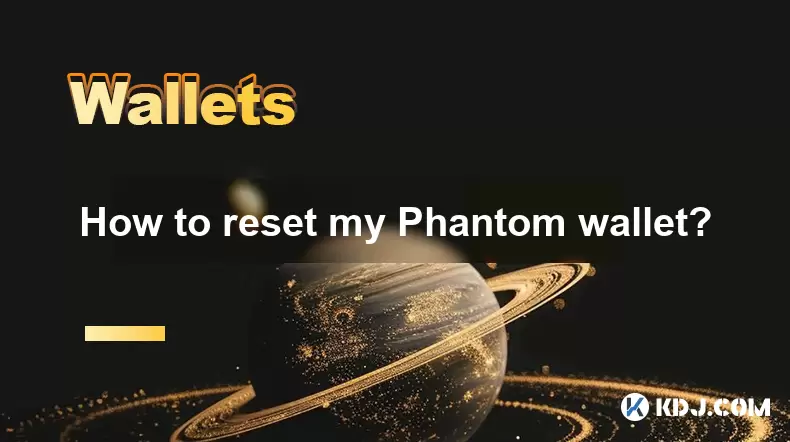
How to reset my Phantom wallet?
Jul 02,2025 at 12:36am
Understanding the Need for Resetting Your Phantom WalletIf you're using a Phantom wallet, you may encounter situations where resetting your wallet becomes necessary. This could be due to forgotten passwords, seed phrase issues, or account corruption. Phantom is a non-custodial wallet primarily used for interacting with the Solana blockchain, and it stor...
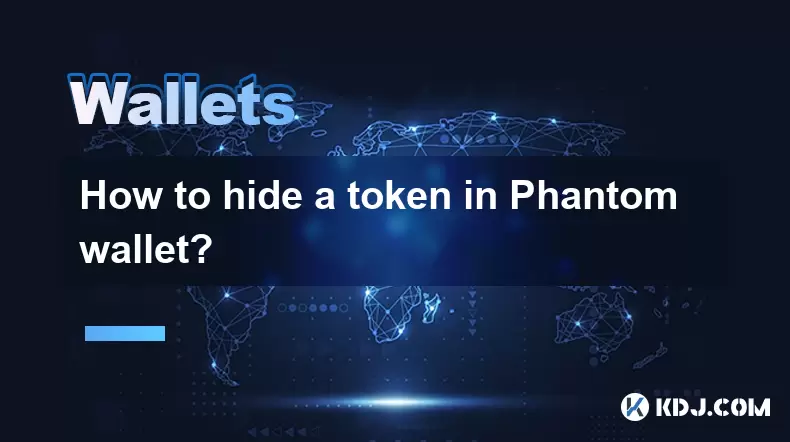
How to hide a token in Phantom wallet?
Jul 01,2025 at 05:49pm
Understanding the Phantom Wallet InterfacePhantom wallet is a popular non-custodial wallet used primarily for interacting with the Solana blockchain. It allows users to store, send, receive, and manage various tokens, including both fungible and non-fungible tokens (NFTs). Before attempting to hide a token, it's essential to understand how the wallet in...
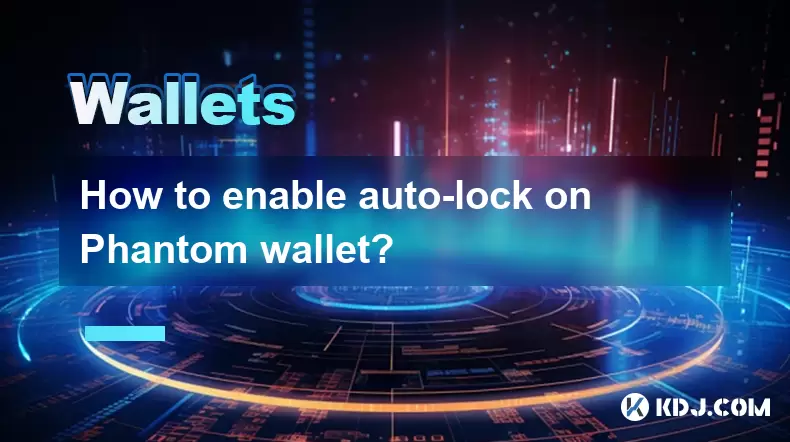
How to enable auto-lock on Phantom wallet?
Jul 01,2025 at 04:01pm
What is Auto-Lock in Phantom Wallet?Phantom wallet is a popular non-custodial cryptocurrency wallet used primarily for interacting with the Solana blockchain. One of its security features includes the ability to set an auto-lock timer, which ensures that the wallet locks itself automatically after a period of inactivity. Auto-lock enhances security by p...
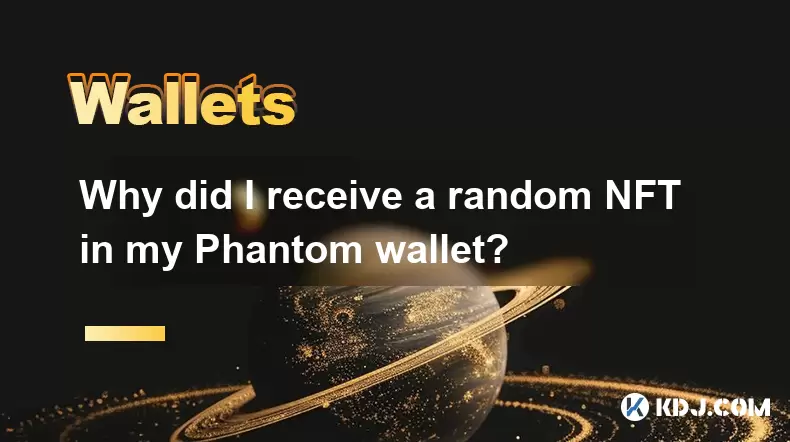
Why did I receive a random NFT in my Phantom wallet?
Jul 01,2025 at 09:00pm
Receiving an Unexpected NFT in Your Phantom WalletIf you've recently opened your Phantom wallet and noticed an unfamiliar NFT appearing in your collection, you're not alone. Many users have reported receiving random or unsolicited non-fungible tokens, often without any prior interaction with the project or sender. This phenomenon has become increasingly...
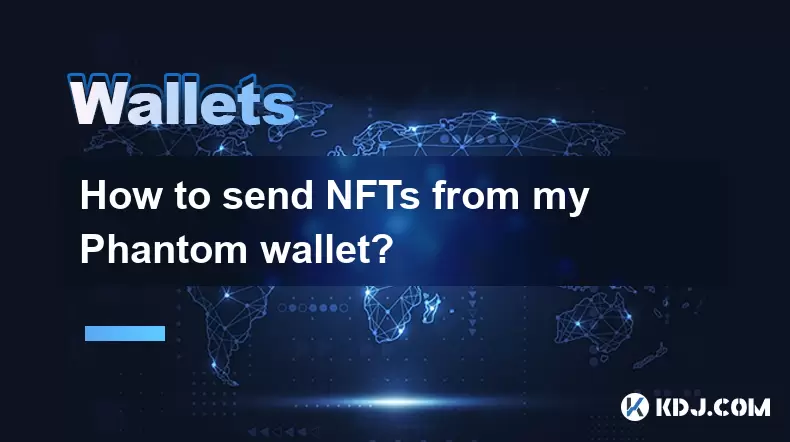
How to send NFTs from my Phantom wallet?
Jul 02,2025 at 03:15am
What is Phantom Wallet and Why Use It for NFT Transfers?Phantom wallet is a non-custodial cryptocurrency wallet primarily used for interacting with the Solana blockchain. It supports both tokens and NFTs, making it a popular choice among users who engage in decentralized finance (DeFi) or digital collectibles. The interface is user-friendly, allowing ev...
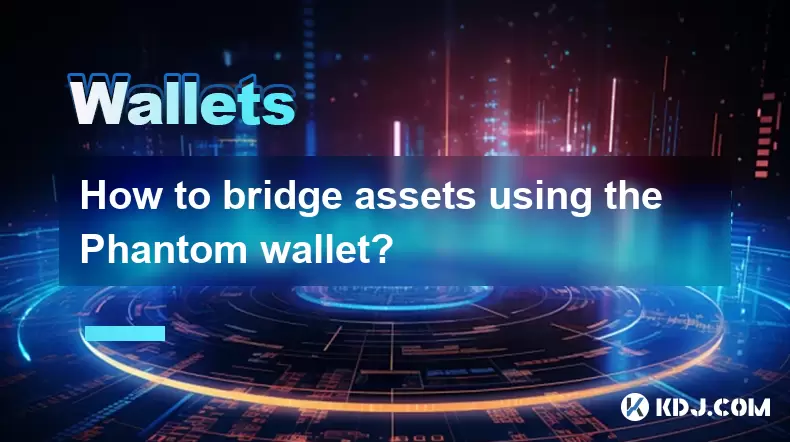
How to bridge assets using the Phantom wallet?
Jul 02,2025 at 02:50am
Understanding the Basics of Asset BridgingAsset bridging refers to the process of transferring digital assets from one blockchain network to another. This functionality is crucial in a multi-chain ecosystem where users may need to move tokens between different networks for various purposes, such as accessing decentralized applications (dApps), participa...

How to reset my Phantom wallet?
Jul 02,2025 at 12:36am
Understanding the Need for Resetting Your Phantom WalletIf you're using a Phantom wallet, you may encounter situations where resetting your wallet becomes necessary. This could be due to forgotten passwords, seed phrase issues, or account corruption. Phantom is a non-custodial wallet primarily used for interacting with the Solana blockchain, and it stor...

How to hide a token in Phantom wallet?
Jul 01,2025 at 05:49pm
Understanding the Phantom Wallet InterfacePhantom wallet is a popular non-custodial wallet used primarily for interacting with the Solana blockchain. It allows users to store, send, receive, and manage various tokens, including both fungible and non-fungible tokens (NFTs). Before attempting to hide a token, it's essential to understand how the wallet in...

How to enable auto-lock on Phantom wallet?
Jul 01,2025 at 04:01pm
What is Auto-Lock in Phantom Wallet?Phantom wallet is a popular non-custodial cryptocurrency wallet used primarily for interacting with the Solana blockchain. One of its security features includes the ability to set an auto-lock timer, which ensures that the wallet locks itself automatically after a period of inactivity. Auto-lock enhances security by p...

Why did I receive a random NFT in my Phantom wallet?
Jul 01,2025 at 09:00pm
Receiving an Unexpected NFT in Your Phantom WalletIf you've recently opened your Phantom wallet and noticed an unfamiliar NFT appearing in your collection, you're not alone. Many users have reported receiving random or unsolicited non-fungible tokens, often without any prior interaction with the project or sender. This phenomenon has become increasingly...

How to send NFTs from my Phantom wallet?
Jul 02,2025 at 03:15am
What is Phantom Wallet and Why Use It for NFT Transfers?Phantom wallet is a non-custodial cryptocurrency wallet primarily used for interacting with the Solana blockchain. It supports both tokens and NFTs, making it a popular choice among users who engage in decentralized finance (DeFi) or digital collectibles. The interface is user-friendly, allowing ev...

How to bridge assets using the Phantom wallet?
Jul 02,2025 at 02:50am
Understanding the Basics of Asset BridgingAsset bridging refers to the process of transferring digital assets from one blockchain network to another. This functionality is crucial in a multi-chain ecosystem where users may need to move tokens between different networks for various purposes, such as accessing decentralized applications (dApps), participa...
See all articles

























































































